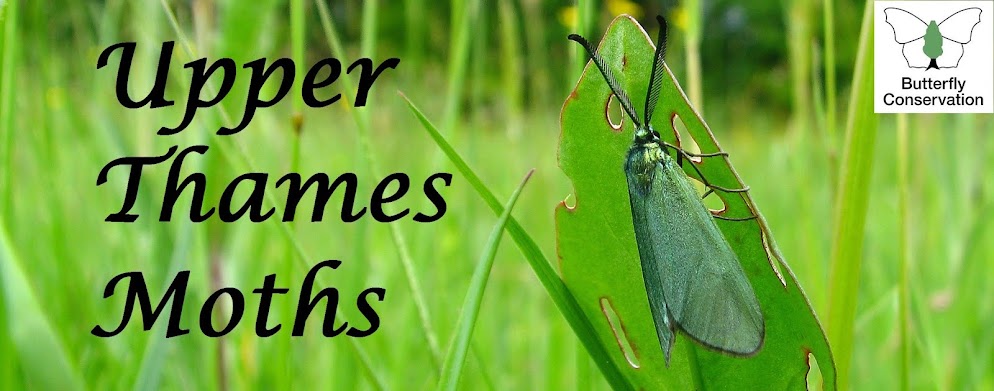Sunday night was a reasonable night for moths, despite the bright moon. I had 45 species in the two traps, though the total number of moths caught was distorted by Square-spot Rustic (126) and Large Yellow Underwing (41). No Catocala, though.
I would appreciate confirmations on a few micros, starting with Pyrausta purpuralis. I've used the excellent "Common Micro-moths of Berkshire" PDF to distinguish this species from P. aurata. I'm reasonably sure that a couple of points make it P. purpuralis: the dorsal section of the yellow cross-band is arched; and the subterminal line on the underside of the forewing is narrow, straight and doesn't reach the costa. My photo of the underside is hampered by being taken through glass and the tip is missing on one side.
 |
| Pyrausta purpuralis upperside Newton Longville, 6 September 2020 |
 |
| Pyrausta purpuralis underside Newton Longville, 6 September 2020 |
I think the second moth (FWL c. 5½ mm) will have to go for the chop. Coleophora trifolii is too large, but there are several other possibilities. I looked at the antennae with a hand-lens: not easy as it never stops waving them around, even after refrigeration! They have thicker basal segments and pale tips (the latter not clear in my photo), so I've ended up with C. alcyonipennella or C. frischella. The Hants Moths site says that the latter is confined to SW England, but that statement doesn't seem to be generally accepted. Anyhow, I thought I'd check here in case gen. det. isn't needed.
 |
| Coleophora sp. Newton Longville, 6 September 2020 |
My last moth may be Orthotaenia undulana. Unfortunately, its markings are not well-defined and although it doesn't seem to have the pale horizontal streak that would make it Celypha lacunana, I'm not 100% sure of this. O. undulana's flight season should be over whereas C. lacunana is still flying.
 |
| Orthotaenia undulana or Celypha lacunana? |
Finally, if time permits I do sometimes try to identify some of the other orders that I find in/near the trap. This leafhopper amused me with the human face on its scutellum: I think it's Populicerus laminatus. It will find its way onto iRecord in due course.
Newton Longville, Bucks


Hello Tim,
ReplyDeleteDealing with the easy one first, Pyrausta purpuralis is correct for the first one as you've shown all the necessary features. Moving on to the Coleophorid, frischella is known from Bucks so if you suspect that pair then the moth needs dissection. The final one is difficult to call as the moth really isn't that well marked. I suspect it will be lacunana (they nearly always are!) but there's no reason why you shouldn't get Orthotaenia undulana in your garden.
Thank you, Dave. I'm glad I got the Pyrausta right: I've got this wrong in the past, but this time I used the Berks micro-moth ID guide and it really is very useful (not just for people in Berks!).
ReplyDeleteI'll send the Coleophorid to Peter.